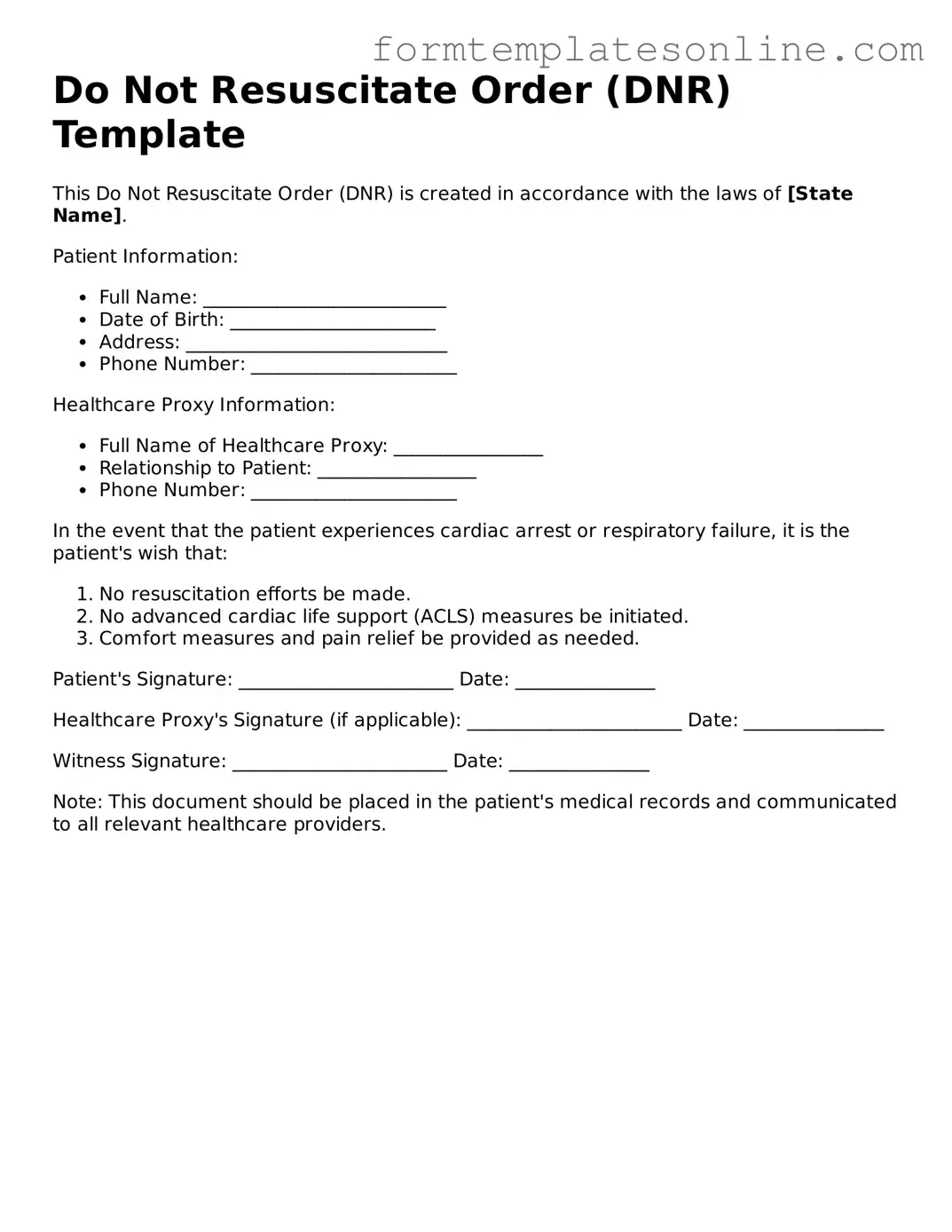Do Not Resuscitate Order (DNR) Template
This Do Not Resuscitate Order (DNR) is created in accordance with the laws of [State Name].
Patient Information:
- Full Name: __________________________
- Date of Birth: ______________________
- Address: ____________________________
- Phone Number: ______________________
Healthcare Proxy Information:
- Full Name of Healthcare Proxy: ________________
- Relationship to Patient: _________________
- Phone Number: ______________________
In the event that the patient experiences cardiac arrest or respiratory failure, it is the patient's wish that:
- No resuscitation efforts be made.
- No advanced cardiac life support (ACLS) measures be initiated.
- Comfort measures and pain relief be provided as needed.
Patient's Signature: _______________________ Date: _______________
Healthcare Proxy's Signature (if applicable): _______________________ Date: _______________
Witness Signature: _______________________ Date: _______________
Note: This document should be placed in the patient's medical records and communicated to all relevant healthcare providers.
